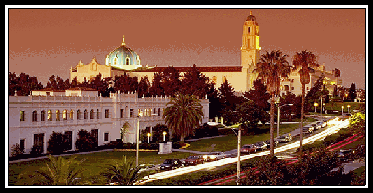
THE ECONOMIC ENVIRONMENT OF BUSINESS
 |
| Spring 2018 |
 |
Graduate (S) Business Administration 509 THE ECONOMIC ENVIRONMENT OF BUSINESS |
|
|
|
| | HOME | SYLLABUS | CALENDAR | ASSIGNMENTS | ABOUT PROF. GIN | |
|
E. Market Structure 1. Identifying competitors a. SSNIP criterion All competitors identified if a merger among all of them would lead to a small but significant non-transitory increase in price - Small but significant = more than five percent - Non-transitory = at least one year Ex. - . . b. Substitutes Firms are competitors if a price increase by one causes loss of customers to another (1) Products have similar product performance characteristics What does product do for consumers? Ex. - . (2) Products have similar occasions for use When, where, and how is a product used? Ex. - . (3) Products sold in the same geographic market Two products are in same geographic market if: (a) they are sold in the same location (b) it is inexpensive to transport goods (c) it is easy for customers to travel to buy goods Ex. - . c. Measurement Cross-price elasticity of demand . . . d. Geographic competitor identification
. 2. Measuring market structure
a. N-firm concentration ratio Combined market share of the N largest firms in a market Most common is the 4-firm concentration ratio 8, 20, and 50 also used Ex. - . . . . Not impacted by changes in the shares of the smaller firms . b. Herfindahl Index Also known as Herfindahl-Hirschman Index
. . .
. . . . . . 3. Market structure and competition a. Classifying market structure . . . (1) Concentration ratio CR4 < 40 => effectively competitive 40 < CR4 < 60 => monopolistic competition CR4 > 60 => oligopoly CR1 > 90 => effective monopoly . (2) Herfindahl Index Perfect competition - usually below 0.2 (or 2000) Monopolistic competition - usually below 0.2 (or 2000) Oligopoly - 0.2 - 0.6 (or 2000 - 6000) Monopoly - 0.6 and above (or 6000 and above) . . . . . . . . . b. Perfect competition (1) Characteristics (a) Many sellers No single firm has a large proportion of total production . (b) Homogeneous product - each product exactly the same Less consumer loyalty . (c) Full information on prices and products are available to consumers . (d) Free entry and exit . (e) Firms are price takers - accept the price established in the market . Ex. - Agricultural, commodities, financial markets . (2) Factors leading to decrease in prices Need two or more of the following: (a) Many sellers Difficult to raise prices i) Diversity of pricing preferences ii) Coordinated reduction in production needed iii) Temptation to cheat and lower prices . (b) Consumers perceive product as homogeneous Customers more willing to switch if goods are homogeneous . (c) There is excess capacity High fixed costs => average cost decreases until capacity is reached . (3) Long-run equilibrium If economic profits are made, competitors will enter until profits are eliminated . . . . . . . . . . c. Monopoly - One seller of a product that has no close substitutes - Firm faces little or no competition in its output market - due to barriers to entry - Can set price without considering how other firms will respond . . . . . . . . . .
(1) Control of essential resources (a) Control of a resource necessary for production Ex. - DeBeers, Alcoa, Ocean Spray . New input sources may emerge Potential antitrust problems . (b) Patents Competitors forbidden from using process or making product without permission for a certain period (20 years) Competitors may try to "invent around" patents . (c) Specialized knowledge Ex. - Coca-Cola, Ecke family . (2) Economies of scale and scope . . . . . . . . Entrant would have to engage in heavy promotion or price competition Cost advantage from economies of scope too - Economies due to multiple production lines, marketing of different brands Ex. - Cereal . (3) Marketing advantages of incumbency Umbrella branding - Reduces uncertainty - Distributors and retailers familiar with prior products . d. Monopolistic competition (1) Characteristics (a) Many sellers Each firm so small that actions will not affect other firms . (b) Products are differentiated Consumers make choices based on factors other than price i) Vertical differentiation Product unambiguously better or worse than competing products Ex. - . ii) Horizontal differentiation Only some customers prefer a product to competing ones Ex. - . Depends on idiosyncratic preferences - geography, styling, brand names Affected by search costs - how easy or hard is it to find alternatives . (2) Entry Profit attracts entry into an industry Price decreases, profits eventually driven to zero Similar to perfect competition . e. Oligopoly (1) Characteristics (a) Few firms (b) Homogeneous or differentiated product (c) Actions by one firm will affect others in industry . (2) Economies of scale and minimum efficient scale . . . . . . . . . . (3) Minimum efficient scale and market structure If MES low compared to market demand => many small firms If MES high compared to market demand => few large firms . . . . . . . . . .
|